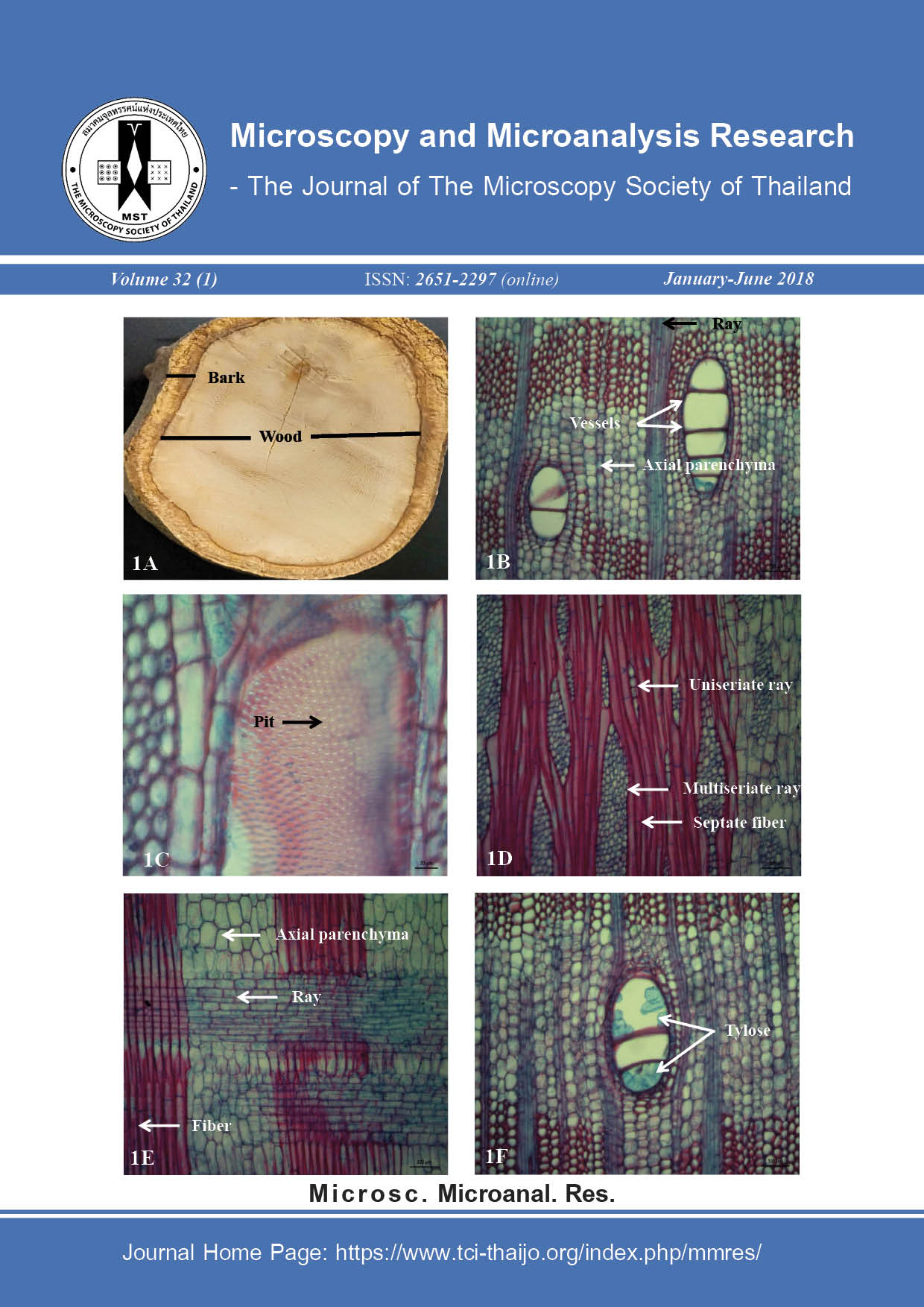Techniques for Preparing Fragile Pollen of Curcuma supraneeana W.J. Kress & K.Larsen Škornick. for Morphological Observation
Main Article Content
Abstract
Scanning electron microscopy (SEM) has been used to study detail of pollen morphology such as structure of the wall pattern, shape and size of pollen grains. Sample preparation to preserve fragile pollens is critical to maintain pollen structure. This research aims to determine an optimum preparation technique of Curcuma supraneeana W.J. Kress & K.Larsen Škornick. fragile pollens for scanning electron microscopy observation. The acetolysis method is an approved technique to prepare pollen for light microscope and SEM. We investigated three conditions including drying, double fixation and boiling in 10% potassium hydroxide. The results showed that drying fresh pollens in a desiccator caused distortion and shrinkage of the pollen grain. The double fixation in chemical preparation technique is excellent to preserve structure of fragile pollen while boiling in 10% potassium hydroxide to remove pollenkitt on the pollen wall breaks and distorts the pollen grain. Therefore, the double fixation in chemical preparation technique is an optimum of way to condition fragile pollens for scanning electron microscope analysis. It is also found that growth stage of the pollen is also an important factor. The pollens from dehiscent anther have a little of pollenkitt on the pollen wall and should be chosen to study the exine pattern of the pollen wall. The fragile pollens are difficult to prepare. Although there are several techniques for pollen morphological study, the suitable methods have not been reported. Also, the pollen growth stage effects on the quality of pollens after accessed the preparation procedures have been providing this study.
Article Details
References
[2] S. Hanks, D. E. Fairbrothers, Effect of preparation technique on pollen prepared for SEM observations, Taxon., 1970, 19(6), 879-886.
[3] P. Kajornjit, S. Saensouk, P. Saensouk, Pollen morphology and leaf anatomy of genus Globba in Thailand, ScienceAsia., 2018, 44, 146-161.
[4] H. Halbritter, Preparing living pollen material for scanning electron microscopy using 2,2-dimethoxypropane (DMP) and critical point drying, Biotech Histochem., 1998, 73(3), 137-143.
[5] J.H. Dustmann, K. von der Ohe, Scanning electron microscopic studies on pollen from honey. IV. Surface pattern of pollen of Sapium sebiferum and Euphorbia spp (Euphorbiaceae), Apidologie., 1993, 24, 59-66.
[6] B.L. Gabriel, Biological Electron Microscopy, Van Nostrand Reinhold Company Inc., New York, 1982.
[7] K. Larsen, S. S. Larsen, Gingers of Thailand, Queen Sirikit Botanic Garden, Maerim, Chang Mai, 2006.

